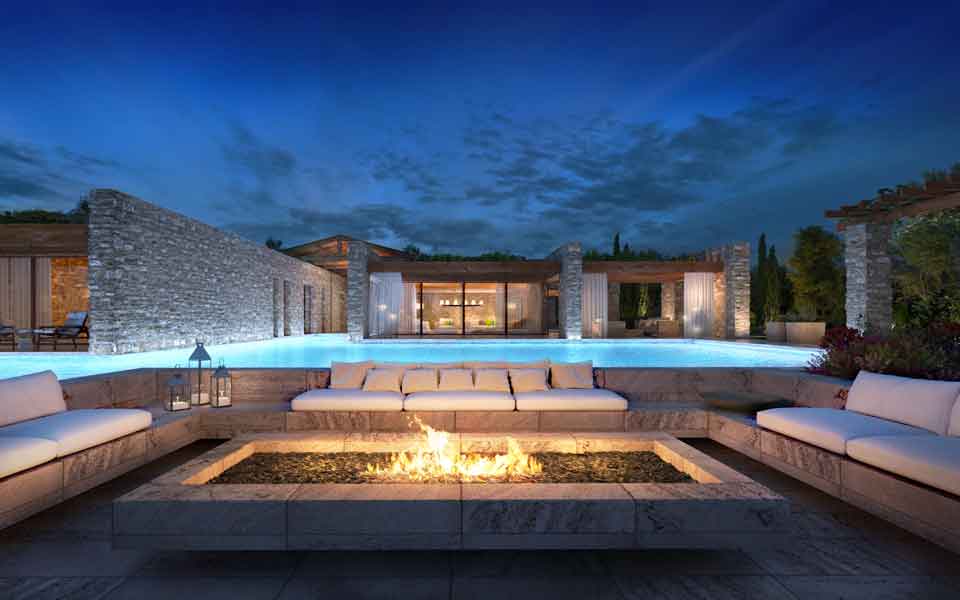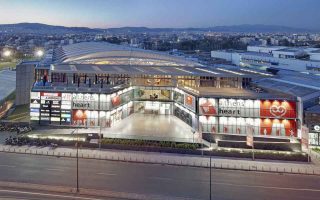Branded residences gaining ground in Greece

Real estate developers in high-end tourism are hoping to attract the international economic elite to Greece in the coming years with the introduction of one of the most successful sector trends, which is the sale of branded residences – luxury properties bearing the name of a well-known brand, such as hotel chains, designers or even automakers.
According to real estate sector experts, following the rise in tourism and the entry of new hotel groups and other brands into the Greek accommodation market, the branded residences trend is beginning to gain ground. These properties, situated within resort complexes, offer the benefits enjoyed by hotel guests, but also more privacy.
Of course, the idea of integrating branded apartments or residences into a hotel or a purpose-built holiday home complex is not new. It began about a century ago in the US; however, the trend has taken off over the last two decades. An increase in the number of ultra high-net-worth individuals (UHNWI), people with a net worth of at least $30 million, are the main buyers of such properties.
Alexandros Moulas, director of Savills International Development Consultancy in London, told Kathimerini that branded residences are created through cooperation between real estate developers and luxury hotel groups.
The latter grants the developer the right to use its name for the residences, which are then sold to private customers who, in turn, may choose to either use the property themselves or have the hotel rent it and manage it on their behalf.
Moulas says buyers are mainly heads of corporations, aged 40-55, with a spouse and one or two children who already have at least two residences abroad, beyond their home base.
“These people are mainly interested in having access to a specific lifestyle and only a few enter the market with the intention of investing – that is, leasing their luxury house to third parties. They are usually from the US, the Middle East and Europe, particularly Britain, Switzerland, France, Belgium and Russia,” he added.
There is also another group of buyers comprising celebrities in the arts and sports. These people are attracted by the prestige of the brand, be it cars or property. At the same time, the fact that branded residences are usually located within hotel resorts enhances the sense of security they seek. Accessibility and location also play a major role, increasing the appeal of luxury villas in hotel resorts that are close to an airport or have a marina for pleasure boats.
In Greece, the villas at the luxury Amanzoe resort in Porto Heli, southeastern Argolida, were the first of their kind, bearing the name of the Aman Resorts luxury hotel chain. The starting price for these villas was 3.2 million euros. The complex was developed by Dolphin Capital and recently acquired by Grivalia Hospitality.
Another real estate player planning to enter the market is TEMES, the company behind the Costa Navarino luxury resort, owned by the shipowning Constantakopoulos family. TEMES is developing Navarino Residences, a range of luxury freehold private properties which will be situated within the award-winning Navarino Dunes resort.
According to Evgenios Dendrinos, director of real estate development at TEMES, the company’s aim is “to develop new projects based on the logic of branded residences, which will be managed by the hotels, offering very good returns for the owners.”
“By capitalizing on all the infrastructure and facilities within the resorts we have developed and which we will develop in the next stages of our investment, the owners will have significant benefits,” he added.
Combined with the fact that Costa Navarino is enjoying one of its most successful tourism seasons yet – due to the golfing facilities and other cultural and sports activities and infrastructure – the resort is “definitely a very good choice” for those who want to buy to let, Dendrinos added.
The Navarino Residences, which are currently under construction and will be delivered to their new owners in a year, embody this philosophy. Their owners will have access to all the Costa Navarino facilities and at the same time can have TEMES take care of the management, leasing and maintenance of their property.
The first phase includes 50 villas ranging from 400 to 1,400 square meters on plots ranging from 1,500 to 3,000 sq.m. Up to now, 50 percent of the available properties have been sold.
Greece can soon expect to see the development of branded residences in hotels. TEMES is launching a similar product inside the new Hilton Athens, while it is examining the possibility of creating an autonomous apartment wing within the hotel, possibly bearing the name of a brand (Hilton or other), whose units will then be sold to buyers.
Those buyers will be able to choose either to live in the apartments or transfer management to the hotel and receive an income from their investment.
Branded residences are also expected to form part of US company NCH Capital’s investment plan in Kassiopi on the Ionian island of Corfu, where NCH will build 50 luxury villas, as well as Dolphin’s investment on the Cycladic island of Kea – the five-star One & Only resort.
Real estate reports show that branded residences are sold on average at a price 31 percent higher than non-branded luxury homes in the same area, which explains the ever-rising international popularity of this category of property.
Based on a report published by Savills International Development Consultancy, it is estimated that there are currently 406 branded residence schemes globally, accounting for some 55,000 units. Seventy-five of those are located in cities rather than resorts, while 54 percent are located in multistory buildings.
Non-tourism brands are also making inroads into this growing sector, including large real estate developers like YOO, fashion houses and automakers such as Britain’s Aston Martin, while continuing to appeal to an audience with high demands in luxury and amenities.
According to the Savills report, while the largest percentage of properties in this sector was previously found in the US and Asia (accounting for more than 60 percent of the market), Mediterranean markets are now playing catch-up, thanks to the recovery of the leisure industry which has made such investments sustainable again. In fact, apart from popular holiday destinations, the new trend also concerns the development of new housing in other emerging markets where there is a rise in living standards.
The market is awaiting the entry of new brands and the expansion of services and amenities offered, with an emphasis now being on providing experiences.
According to analysts, the biggest capital gains in comparison to conventional luxury homes are usually to be had in emerging markets, where the supply of such properties is negligible and the difference in quality to other housing stock is very high. For example, Ritz-Carlton residences in Thailand’s tallest building, the MahaNakhon in Bangkok, have been sold at prices 80 percent higher than those of other residences in the same area.





